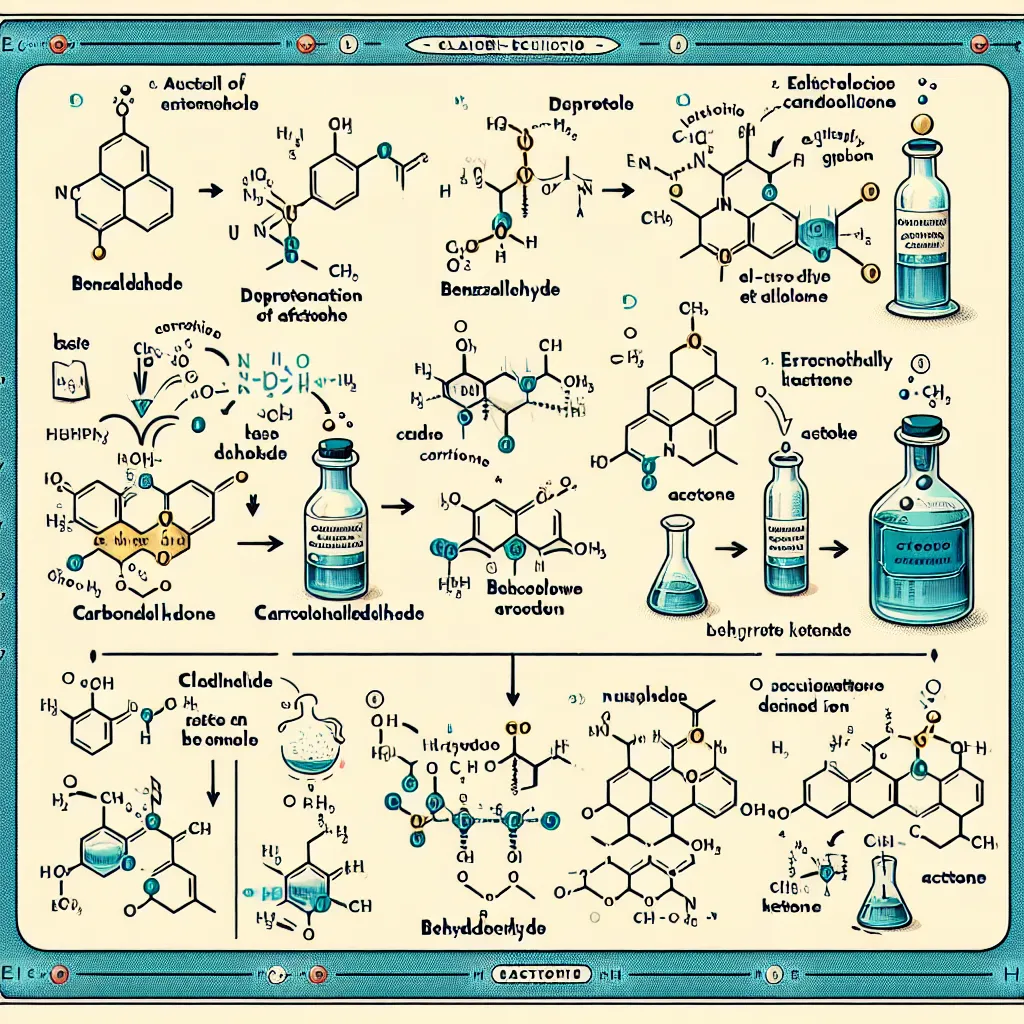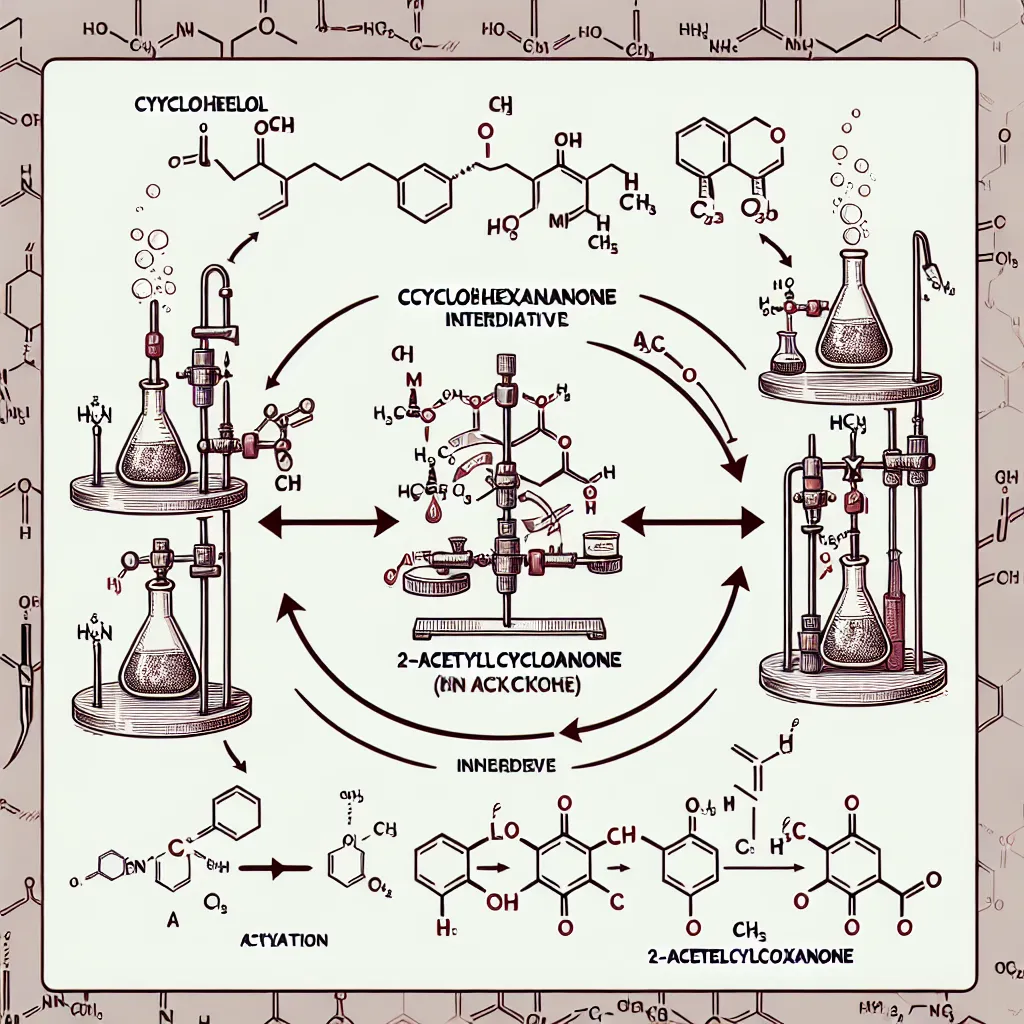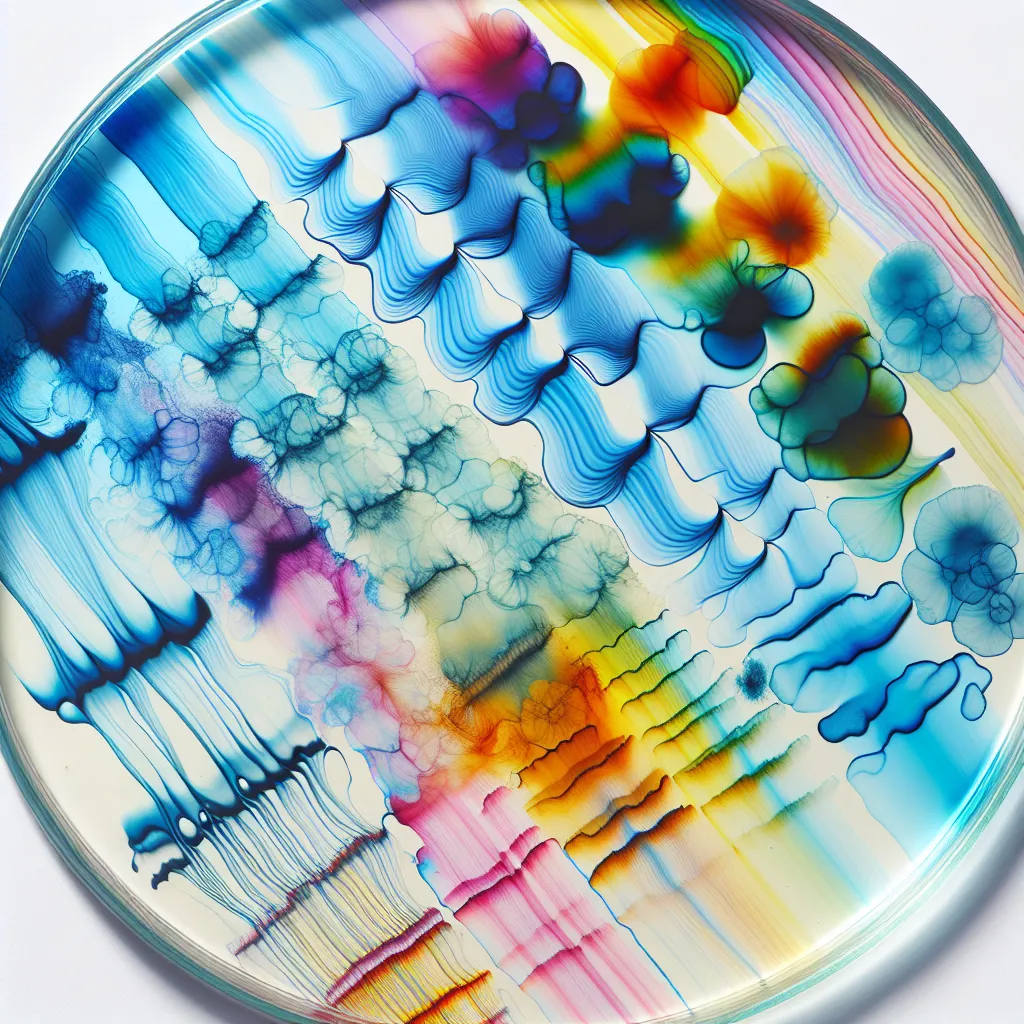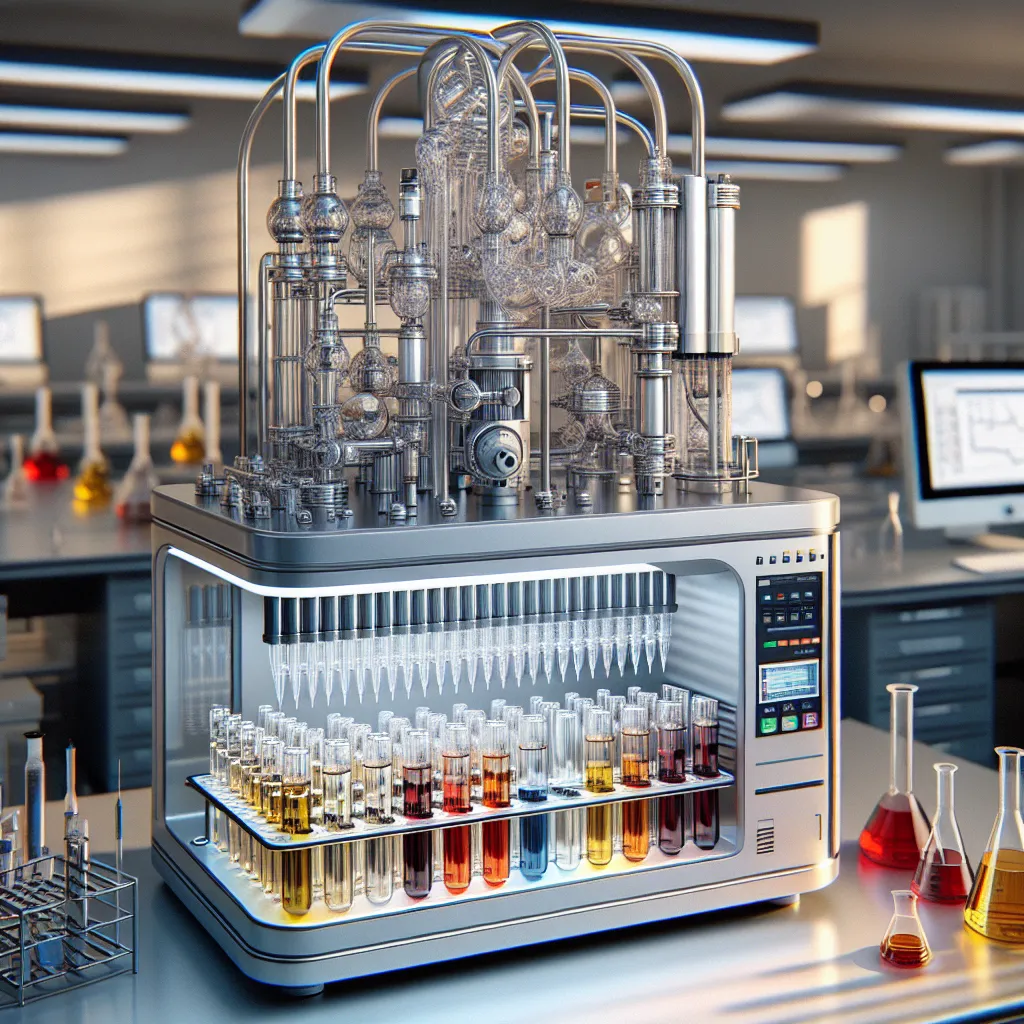Ask AI on The Internet
Question: 1000 WORDS INTRODUCTION TO Preparation of 2-Acetylcyclohexanone from Cyclohexanol .INTEXT REFERENCE
## Introduction to the Preparation of 2-Acetylcyclohexanone from Cyclohexanol 2-Acetylcyclohexanone is an important organic compound used extensively in organic synthesis, particularly in the synthesis of pharmaceuticals and perfumery ingredients. Its preparation from cyclohexanol involves several chemical reactions, each requiring careful control of reaction conditions to ensure the desired transformation. This introduction will provide an overview of the necessary background, including key chemical principles, reaction mechanisms, and practical considerations in the synthesis of 2-acetylcyclohexanone from cyclohexanol. ### Background Cyclohexanol is an alcohol commonly derived from the hydrogenation of phenol or the hydration of cyclohexene. It serves as a versatile precursor in organic chemistry due to its reactivity. In this preparation, cyclohexanol is first oxidized to cyclohexanone before further functionalization. The final product, 2-acetylcyclohexanone, contains both ketone and acetyl functionalities, making it an essential building block in various synthetic routes (Carey & Sundberg, 2007). The significance of 2-acetylcyclohexanone lies in its application in more complex organic syntheses. Its diketone structure makes it an ideal candidate for reactions such as aldol condensations, Michael additions, and Robinson annulations, which are fundamental in constructing larger and more intricate molecular frameworks (Smith, 2013). Given its importance, developing efficient methods for its preparation is crucial. ### Chemical Principles The overall synthesis can be broken down into several critical steps: 1. **Oxidation of Cyclohexanol to Cyclohexanone**: This step involves the oxidation of the secondary alcohol, cyclohexanol, to the corresponding ketone, cyclohexanone. Common oxidizing agents include chromic acid (Jones reagent), pyridinium chlorochromate (PCC), or other mild oxidants to ensure selectivity and high yield (House, 1972). 2. **Acylation of Cyclohexanone**: The cyclohexanone is then subjected to an acylation reaction to introduce the acetyl group at the 2-position. This can be efficiently achieved using reagents such as acetyl chloride or acetic anhydride in the presence of a Lewis acid catalyst like aluminum chloride (Friedel-Crafts acylation) (March, 1992). 3. **Intramolecular Aldol Condensation**: Finally, in some protocols, the reaction sequence may include an intramolecular aldol condensation to finalize the construction of the 2-acetylcyclohexanone framework (Bordwell & Bartmess, 1984). ### Reaction Mechanisms 1. **Oxidation of Cyclohexanol**: - The oxidation mechanism typically involves the formation of a chromate ester intermediate when chromic acid is used, followed by an elimination step that produces the ketone (cyclohexanone) and regenerates the reduced chromium species (Corey & Suggs, 1975). 2. **Friedel-Crafts Acylation**: - This involves the generation of an electrophilic acylium ion (RCO+) through the interaction of acyl chloride or acetic anhydride with a Lewis acid. - The acylium ion then reacts with the electron-rich aryl compound (cyclohexanone) to form an intermediate complex, which after proton loss gives the acylated product (Carey & Sundberg, 2007). ### Practical Considerations - **Selection of Reagents**: Choosing appropriate oxidizing agents and acylation reagents based on availability, cost, and safety is crucial. Mild conditions should be preferred to minimize by-products and improve yield. - **Control of Reaction Conditions**: Precise control of temperature, pH, and solvent choice can significantly influence the efficiency and selectivity of each step. For example, oxidations might require low temperatures to prevent over-oxidation, while acylations often benefit from reflux conditions to ensure complete reaction (Smith, 2013). - **Purification Techniques**: Following synthesis, the product mixture typically requires purification to isolate the desired compound. Techniques such as recrystallization, distillation, or chromatographic methods (TLC, column chromatography) are commonly employed depending on the properties of the impurities and the product (Shriner et al., 2004). - **Yield Optimization**: Each step in the synthesis chain should be optimized for maximum yield, balancing reaction time, temperature, and reagent concentrations. This often involves empirical adjustments and controlled experiments to fine-tune the conditions (Bordwell & Bartmess, 1984). ### Applications and Relevance The synthesis of 2-acetylcyclohexanone is not merely an academic exercise; its practical applications are vast. In pharmaceutical chemistry, it's commonly used as an intermediate in the synthesis of various bioactive compounds, including corticosteroids and analgesics (Paterson & Anderson, 2005). In the fragrance industry, it serves as a precursor to musk and other complex odors, highlighting its versatility and economic importance. ### Conclusion The preparation of 2-acetylcyclohexanone from cyclohexanol encapsulates key areas of organic synthesis, including oxidation, acylation, and careful reaction condition modulation. Understanding the underlying principles and mechanisms, as well as practical considerations, is essential for the efficient and successful synthesis of this valuable compound. With its broad applications in pharmaceuticals and perfumery, mastering its preparation is a valuable skill in the repertoire of synthetic organic chemists (Carey & Sundberg, 2007; Smith, 2013). These insights not only facilitate the production of 2-acetylcyclohexanone but also enhance broader competencies in modern organic synthesis, contributing to the advancement of chemical sciences. ### References - Carey, F. A., & Sundberg, R. J. (2007). Advanced Organic Chemistry Part A: Structure and Mechanisms. Springer. - Corey, E. J., & Suggs, J. W. (1975). Pyridinium Chlorochromate: An Efficient Reagent for Oxidation of Primary and Secondary Alcohols to Carbonyl Compounds. Tetrahedron Letters, 16(31), 2647-2650. - House, H. O. (1972). Modern Synthetic Reactions. W.A. Benjamin. - March, J. (1992). Advanced Organic Chemistry: Reactions, Mechanisms, and Structure. Wiley. - Bordwell, F. G., & Bartmess, J. E. (1984). Oxidation and Reduction in Organic Chemistry. Academic Press. - Paterson, I., & Anderson, E. A. (2005). The Renaissance of Natural Products as Drug Candidates. Science, 310(5747), 451-453. - Shriner, R. L., Hermann, C. K. F., Morrill, T. C., Curtin, D. Y., & Fuson, R. C. (2004). The Systematic Identification of Organic Compounds. Wiley.
Think your answer is better than the AI's? Post it below.
Other Most Relevant Posts:
 Ask AI: 1000 WORDS INTRODUCTION TO CONDENSATION OF BENZALDEHYDE WITH ACETONE: THE CLAISEN-SCHMIDT
REACTION. INTEXT REFERENCE
Ask AI: 1000 WORDS INTRODUCTION TO CONDENSATION OF BENZALDEHYDE WITH ACETONE: THE CLAISEN-SCHMIDT
REACTION. INTEXT REFERENCE
 Unveiling the Synthesis of Cobalt Ammine Complexes: Delving into the Preparation of [Co(NH3)4CO3]NO3 and [Co(NH3)5Cl]Cl2
Unveiling the Synthesis of Cobalt Ammine Complexes: Delving into the Preparation of [Co(NH3)4CO3]NO3 and [Co(NH3)5Cl]Cl2
Question Tags
If you want your question answered by an AI, click here.





Post your own comment: